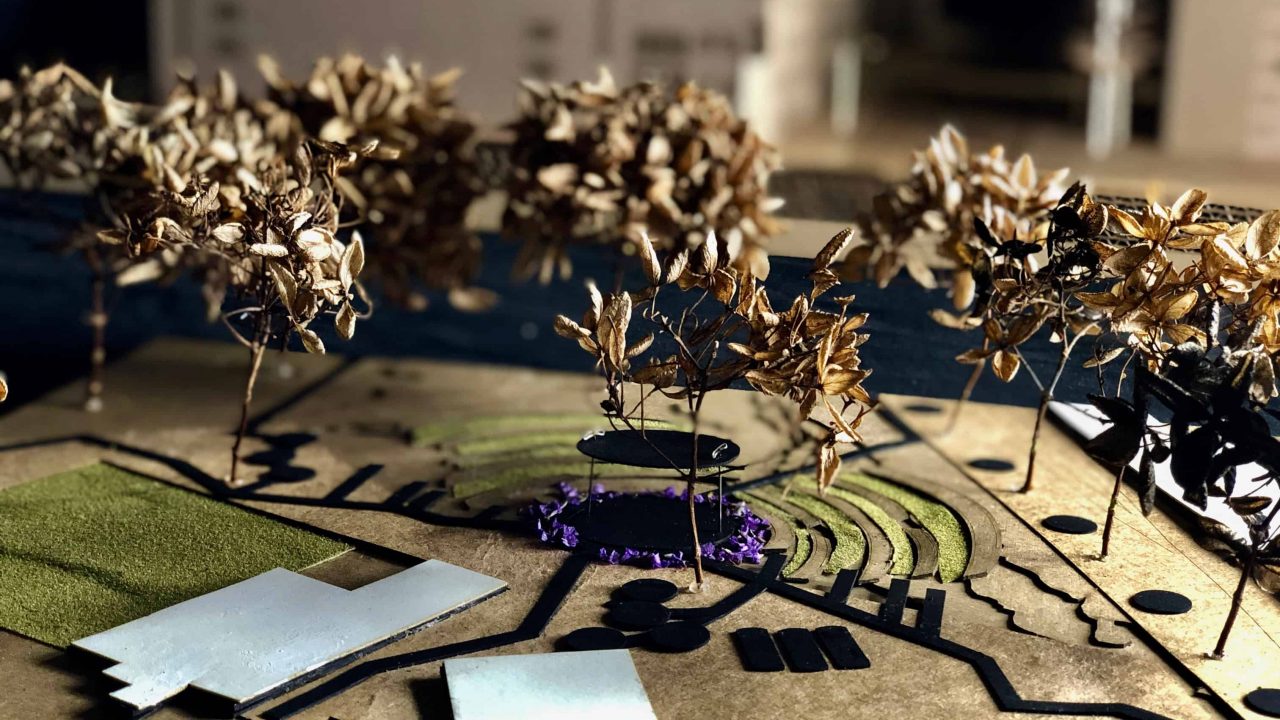Auburn Landscape Architecture Students Present to Pell City Council

Pell City, Alabama, a community of 14,000 located 37 miles east of Birmingham, is facing economic struggles and trying to decide how to deal with several hazardous waste brownfields. During the past semester, two graduate students in Auburn’s Master of Landscape Architecture program, Makala Gibson and Keena Miles, made the town the focus of their studies as part of their fourth semester studio class. At the end of the project, they presented their work to the Pell City Council, pitching their recommendations for a downtown revitalization and providing models and presentation boards that illustrated their proposal.
Gibson and Miles began their work with months of site analysis and mapping and, and held meetings with city leaders and community residents. They looked at comparable cities like Athens, Alabama, and developed a wide range of ideas. Based on the fact that Pell City is a town struggling with economic growth and brownfield clean up, they offered recommendations that ranged from simple gardens to structural restoration. They proposed the implementation of amphitheater-style community gardens that allow for seating and gathering at the Bussie Oil brownfield site and across the city, including spots at schools and in lower-income neighborhoods. As part of the downtown restoration, they proposed a farmer’s market and a restoration of the old depot. They also suggested that the old Bussie Oil building be converted into a family restaurant with outdoor dining, a pavilion for performances and a shared meeting space. The Bussie Oil site is home to three large oil tanks, and the team recommended repurposing them into filtration tanks that could be used to water remediation meadows full of sunflowers, located next to rain gardens that would address storm water management.
Gibson found the work challenging in a way she hadn’t experienced before. “For a small city like Pell City with rural and low-income residents, the funding and costs of trying to revitalize parts of a city are large and consuming,” she stated. Despite the challenges they faced, both students felt welcomed by the city council and the residents with whom they spoke. Miles said the presentation to the council was exciting. “The audience was attentive and appreciative of the amount of work we had produced. They examined our boards and even asked questions. It was truly gratifying.”
Gibson knows that Pell City faces challenges in its revitalization but hopes that some of the ideas presented could be adopted. “Pell City faces the next steps of redeveloping large brownfield sites and a revitalization of downtown,” she said. “I feel that our proposals and designs gave them a multitude of small and large scale interventions that could be used in restoring the city.”
See more in:
Student Experience,
Student Work